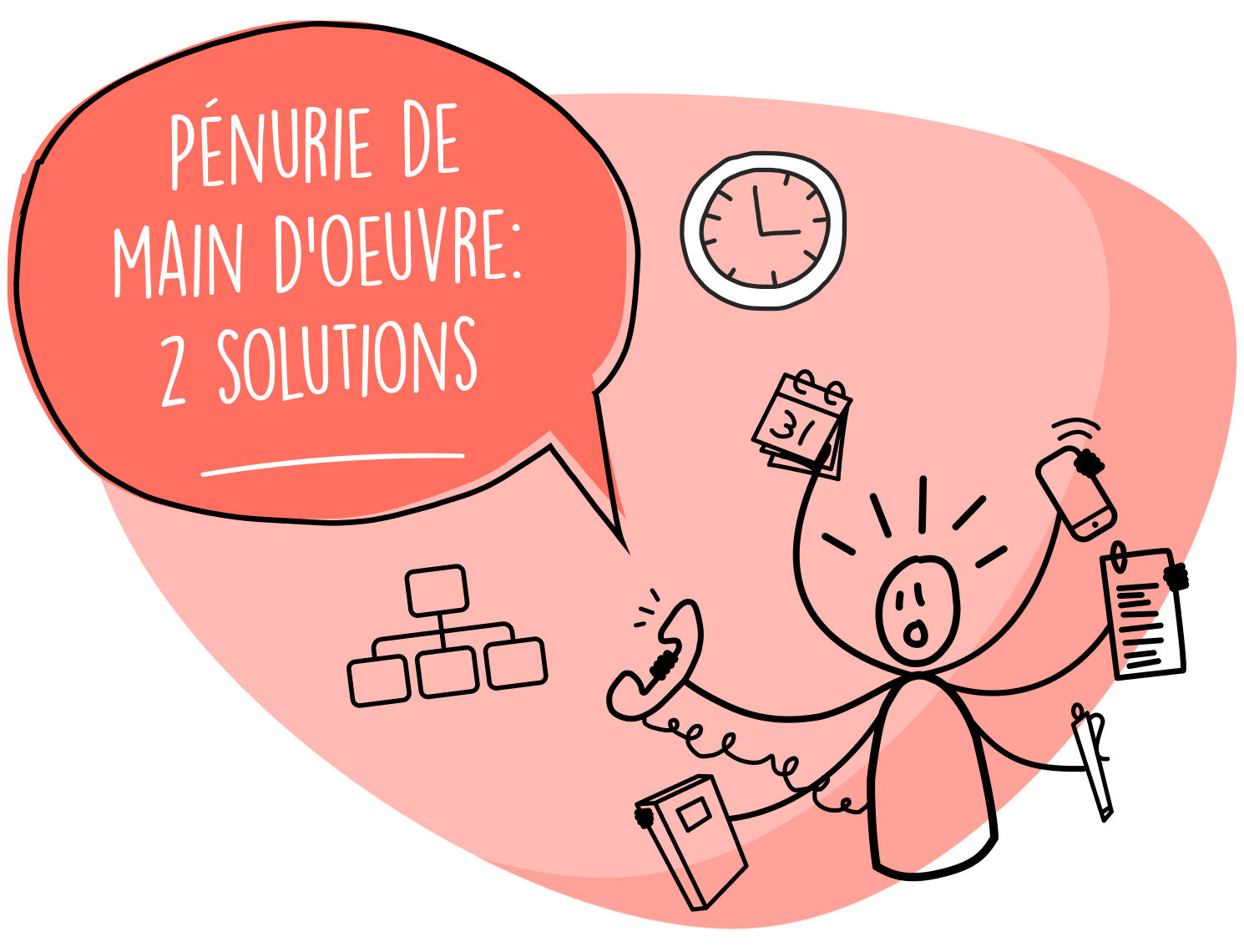The labor shortage is an issue that affects us all in one way or another. Faced with such a complex issue, how can economic development organizations, issue tables and associations move from "I think that" to "we know that" and "we're all acting together"?
At Phar, we've been looking into this and I'd like to share with you, through this post, some statistics, comments and solutions we've discussed with some of our customers.
According to the Institut du Québec (IQ), the main reasons for these shortages are lack of candidates (45%), lack of general and technical skills (44%) and lack of experience (35%). There were 265,300 unemployed people in Quebec in the third quarter of 2021, while the number of job vacancies stood at 238,500, a record vacancy rate of 6.1%, demonstrating the importance of qualification.
It's all about qualifications.
As the members of a round table I recently moderated so aptly put it, the labor shortage is complex. Unfortunately, it causes a great deal of collateral damage, and the long-term survival of many companies is at stake.
To illustrate this point, I'd like to draw your attention to the following points.
To illustrate this point, I drew the following picture:

Contractors, managers and employees are constantly avoiding "potholes" and it's exhausting: we need only think of the delays and rejections in orders, the exhaustion due to working overtime, to name but a few. At the end of this road full of pitfalls, we can see a sun that represents the beautiful opportunities to reinvent ourselves and collaborate with all stakeholders: collaboration rather than competition!
Faced with such a complex issue, how can economic development organizations, issue tables and associations:
- Have a clear and evolving understanding of the situation?
- Be informed about the major trends that have been accelerated by the pandemic?
- Understand the scope of the situation in Quebec and be familiar with the entire ecosystem that can support businesses?
- Be inspired by initiatives at company, regional, provincial and national levels?
- Get an overview of the various levers (government initiatives, social dialogue, organizational culture, diversified workforce, automation and skills development)?
To answer these questions, we present below two case studies where we activated strategic intelligence.
Case study 1: Economic development organization wishing to define a new service offering to support all businesses in its territory.
As a first step, we produced an intelligence bulletin to paint a picture of the situation in 2021. This bulletin enabled us to gain a good understanding of all the perspectives affecting the labor shortage issue in order to categorize and define the priority watch axes.
We used the "Job Watch" tool, which is a tool that allows us to assess the current situation of the labor shortage issue.
We used "Mind mapping1" to present the information gathered. This enabled us to map the labor shortage issue visually. This approach presents the mapping in a tree structure, with the elements gravitating around the central theme and the connections existing between the various items and their satellites. What's more, it enabled us to present the information effectively in our meetings with customers. In 3 months, over 100 items were linked using this visual thinking tool. We've simplified this complex issue into an image. It will certainly be used to define the new service.
Case study 2: Regional concertation table (30 regional partners)
This regional concertation table gave us the mandate to facilitate a meeting related to the labor shortage issue. We had set 3 objectives in advance of this meeting:
- Share strategic information through the implementation of a watch bulletin and the presentation of key elements so that all partners move from "I think that" to "we know that";
- Lead partners to define a shared vision of what a labor shortage is in a sector of activity in a region of Quebec through the facilitation of a strategic decision-making workshop;
- Engage partners to commit to taking action to contribute to the group's shared vision following this meeting.
This method enabled the 30 partners to have a common understanding and definition of this issue. Secondly, this exercise enabled participants to become more aware of all the initiatives available to companies in the region and to define some solutions, thanks to a 3 Cs exercise (conserve, cease, create). Following this meeting, we used the "Storytelling2" method, creating images and a story to capture the moment and illustrate the next steps. We used this technique rather than writing a conventional report to engage all stakeholders in a process. A regional force where "all together" takes on its full meaning.
As you can see from this article, we had 1 theme (the labor shortage issue), 2 customers, 2 types of needs and very different watch axes. Whether through "Mind mapping" or "Storytelling", in both cases we used visual thinking to engage stakeholders in action.
1 The concept of mind mapping was developed in the 1970s by the English psychologist, Tony Buzan.
2 Storytelling is a communication method based on a narrative structure of discourse akin to that of tales and stories.

December 7, 2024
